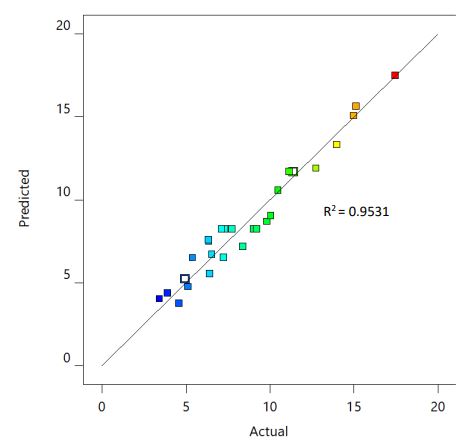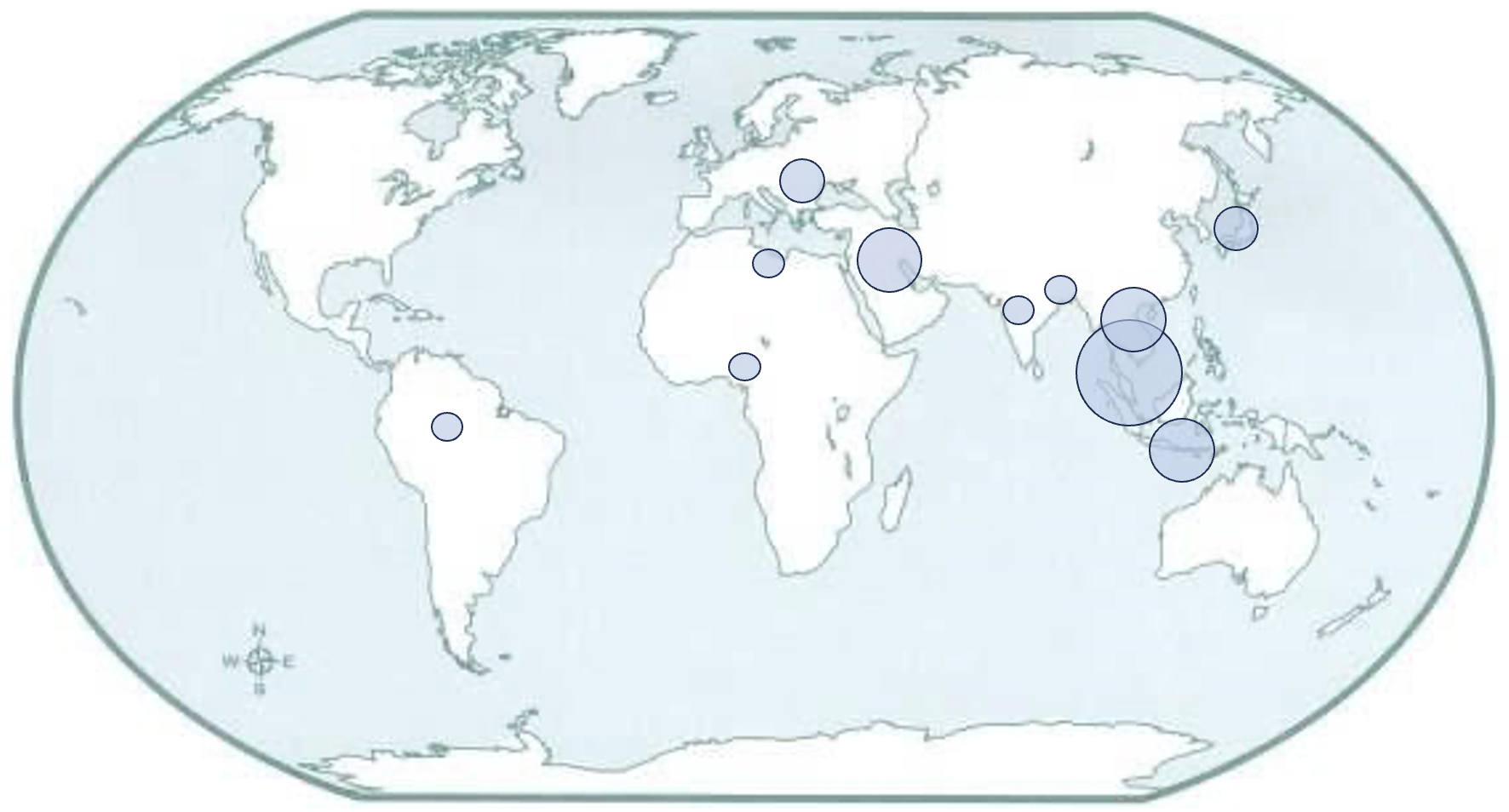A Three-Level Factorial Model for Maximising Protein Extraction from Rice Bran with Choline Chloride: Glycerol
DOI:
https://doi.org/10.37934/armne.19.1.6377Keywords:
Three level factorials, protein, rice bran, deep eutectic solventsAbstract
Rice bran, a by-product of rice milling, contains four protein types – albumin, globulin, prolamin, and glutelin – known for their hypoallergenic nature and nutritional advantages. To enhance rice bran's worth, its protein was isolated using deep eutectic solvent (DES). The influence of three operational factors (temperature, extraction time, and rice bran to DES ratio) on protein yield was evaluated post-conversion using three level factorial design. Optimal conditions at 80°C, 3 hours, and 1:5 rice bran to DES ratio yielded the highest extracted rice bran protein (RBP) at 17.49%. Temperature and solvent-to-sample ratio show the lowest p-value, indicating a significant effect on the RBP yield. The validation test shows an error of less than 5% between the experimental and the predicted value, showing the model can be used to predict the RBP yield. The RBP was then characterised using Fourier Transform Infrared Spectroscopy (FTIR), Bradford Assays and SDS-PAGE electrophoresis to confirm the protein presence in rice bran powder. FTIR analysis showed the existence of amide I, amide II, aliphatic groups and amine or hydroxyl groups in the RBP. Furthermore, Bradford assays analysis indicated 23.89 ± 0.75% protein content in rice bran powder. SDS-PAGE electrophoresis shows the existence of Albumin and globulin in the RBP. In conclusion, a full three level factorial can be used to model and predict the optimal condition for protein extraction from rice bran using ChCl-Gly DES.









